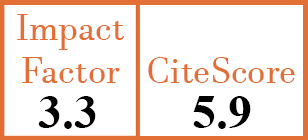Full Papers
Real-world outcomes of rituximab- and cyclophosphamide-based induction therapy regimens alone and in combination over 24 months in ANCA-associated vasculitis
K. Von Allwörden1, S. Klapa2, S.C. Werth3, A. Leheis4, H. Graßhoff5, A. Müller6, G. Riemekasten7, M. Nitschke8, D. Thaçi9, P. Lamprecht10
- Department of Rheumatology and Clinical Immunology, University of Lübeck, Germany.
- Department of Rheumatology and Clinical Immunology, University of Lübeck, and Institute of Experimental Medicine, Christian-Albrechts-University of Kiel c/o German Naval Medical Institute, Kronshagen, Germany. Sebastian.klapa@uksh.de
- Department of Internal Medicine I, Division of Nephrology and Transplant Center, University of Lübeck, Germany.
- Department of Rheumatology and Clinical Immunology, University of Lübeck, Germany.
- Department of Rheumatology and Clinical Immunology, University of Lübeck, Germany.
- Department of Rheumatology and Clinical Immunology, University of Lübeck, Germany.
- Department of Rheumatology and Clinical Immunology, University of Lübeck, Germany.
- Department of Internal Medicine I, Division of Nephrology and Transplant Center, University of Lübeck, Germany.
- Comprehensive Center for Inflammation Medicine, University of Lübeck, Germany.
- Department of Rheumatology and Clinical Immunology, University of Lübeck, Germany.
CER18609
Full Papers
Free to view
(click on article PDF icon to read the article)
PMID: 40892637 [PubMed]
Received: 07/02/2025
Accepted : 28/04/2025
In Press: 02/09/2025
Abstract
OBJECTIVES:
This retrospective cohort study aimed to evaluate real-world data on the efficacy of rituximab (RTX) alone versus combined rituximab/cyclophosphamide (RTX/CYC) induction therapy, followed by RTX maintenance, compared with cyclophosphamide-azathioprine (CYC-AZA) therapy in ANCA-associated vasculitis (AAV).
METHODS:
Patients with new-onset or relapsing organ- or life-threatening AAV (granulomatosis with polyangiitis [GPA] n=97; microscopic polyangiitis [MPA], n=69) were followed over 24-months. Patients with previous RTX and/or CYC therapy were excluded. Treatment comprised combination of GC with either RTX alone or RTX/CYC combination for remission induction, each followed by RTX maintenance therapy, or CYC-AZA therapy. The primary outcome measure was complete remission defined as absence of vasculitis activity with no concomitant GC therapy after 12 and 24 months.
RESULTS:
20% and 35% of the patients in the RTX group and 22% and 33% in the RTX/CYC group achieved complete remission at 12 and 24 months, contrasting with 3% and 9% in the CYC-AZA group (p=0.008 and p=0.003, respectively). The majority of patients achieved remission with concomitant GC therapy at any time during the 24-months observation period (RTX, 88%; RTX/CYC, 87%; CYC-AZA, 81%; p=0.097). RTX alone was associated with a lower relapse rate compared with RTX/CYC in the subgroup of GPA patients (p=0.041). Moreover, RTX alone was comparably effective to RTX/CYC and CYC-AZA in terms of relapse in patients with severe renal disease (p=0.091).
CONCLUSIONS:
RTX alone was similarly effective to RTX/CYC combination and CYC-AZA therapy in AAV patients, including those with severe renal involvement.



